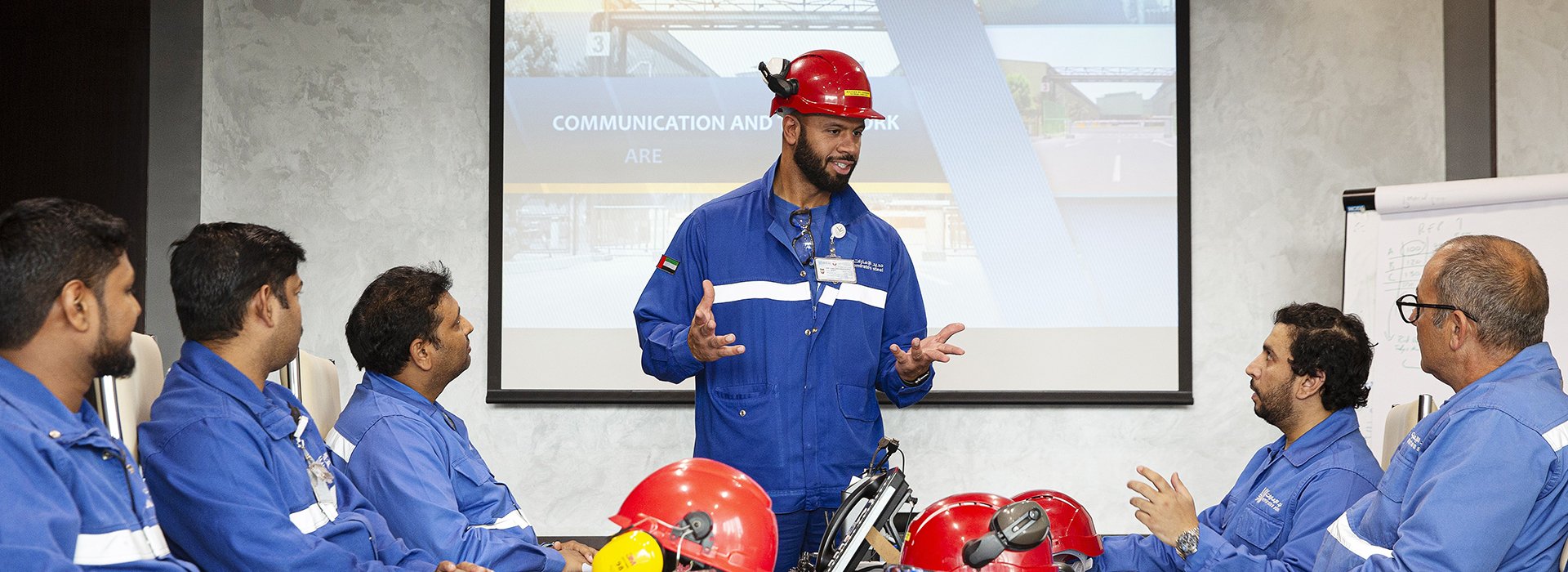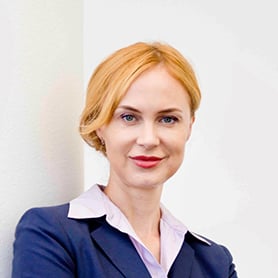Anna Petrachkova: Secret ingredient of a safety culture
With over 20 years’ senior experience of safety management within multi-national oil, gas and mining companies, Anna Petrachkova champions persistent, visible, and sincere leadership as the secret ingredient of a safety culture.


Anna Petrachkova
Formerly Health and Safety Director, Emirates Steel Arkan
Q.
Tell us about how your career in safety began and if there’s any milestones that shaped this journey?
I am someone who has to have a purpose in life. Work is not just about money; it’s about expressing yourself and making a difference. Working in safety is unique, because even though you are not a doctor, strictly speaking you are saving lives. It’s a higher purpose and I feel blessed to have that as my career. Working in safety has a dual role, one element is control – making sure things are done as per procedures and rules, and the other element is around consulting - you are there to help people. It’s a role that is very rewarding and I get something back by knowing I’m making a difference and keeping people safe. Initially I didn’t see myself becoming a safety professional. I graduated from high school in 1991, when Russia was just opening to the rest of the world. My passion was foreign languages, and it seemed a sensible path that would open doors – which it did. In fact, it was whilst I was working as an interpreter for an oil company that I first encountered western safety practices and was exposed to safety audits and incident investigations. I was 18 at the time and a career in safety wasn’t on my radar. Instead, I was studying Germanic Philology at university and then worked in real estate before a former colleague invited me to join Dupont Safety Resources. They were setting up an office in Moscow and it was very much a case of learning on the job. I was very lucky to learn from the best and had a chance to work on a range of projects. I was fortunate to have a boss who was committed to developing people and this shaped my safety career path. I completed an MBA in Business Administration and Management, expanded my love of languages and passion for safety by completing a Master’s in Integrated Management of Quality, Safety and Environment at University of Barcelona, later followed by an International Diploma in Occupational Health and Safety.
“There is no silver bullet that will solve all your safety problems, but if you asked me for a secret ingredient, it is leadership.”
– Anna Petrachkova, Formerly Health and Safety Director, Emirates Steel Arkan
Q.
It’s interesting that you describe being a leader in safety management as a ‘dual role.’ If you break this down further, what does good leadership look like to you, and what impact can this have on a safety culture?
I always say there is no silver bullet that will solve all your safety problems, but if you asked me for a secret ingredient, it is leadership. With a leader who leads by example, is persistent, and sincere – it’s close to a miracle. With a good leader I’ve seen lost time injury (LTI) frequency rates drop tenfold, making transformations much more quickly than perceived to be possible. But to do this, leaders must show that they sincerely care about people, it’s not just about caring if fatalities happen. It’s about letting people know that they matter. Ultimately, safety must be a trigger word for everyone.
Q.
Over the last few years, how have you dealt with the growing need to address psychosocial risks such as mental health?
Mental wellbeing, mental alertness, memory and good sleep are really important when it comes to safety, and this is recognised by the number of ‘safety moments’ that are shared at the start of large meetings which include mental health issues and lack of sleep. We simply can’t ignore this. The pandemic accelerated the need to address this, as it affected people in so many ways. Initially it was the unknowns that were hard to manage, it was a strange time with some people home working, we didn’t know how long it would last and what would become of us. Lessons have been learnt and we have become more sensitive to people’s needs, especially in relation to mental health needs. I certainly try to be more attentive to people and address the potential causes. For example, we have introduced awareness sessions, including sessions on personal finance management to try and alleviate money worries.
“Face-to-face time in the field will always be a necessity, it’s one of the crucial ingredients of a safety management programme.”
– Anna Petrachkova, Formerly Health and Safety Director, Emirates Steel Arkan
Q.
What benefit is technology and innovation bringing to safety management? Do you have any reservations?
In terms of innovation everybody is looking at artificial intelligence (AI) and virtual reality (VR) and I see this being integrated more and more into safety management. For example, we use AI to identify unsafe acts, such as missing personal protection, crossing barriers, climbing without a harness. Every little helps, so if AI can help us with this then that is great. Another innovation that has a future is VR training. Times are changing fast; we are living in a much faster world and as younger people are joining the company, we have to find a way to effectively communicate with them. It’s a fact that retention level is higher if VR is used because the body and brain recognise an actual practical experience. Younger people have a more fragmented attention span, so we need to meet their needs and make training more engaging and memorable. Gamification of training is inevitable, otherwise the younger generation just won’t get it, but I don’t think we’ll ever live in a world where all jobs will be done by robots, there will always be people. Face-to-face time in the field will always be a necessity, it’s one of the crucial ingredients of a safety management programme. Having leaders out there asking questions and listening to their employees makes an impression. It’s simple but very effective.
Q.
What is the key element to future-proofing a business so that it can be more resilient and ultimately survive? What role do other practice areas, such as sustainability and operational excellence play in this?
It’s about continuous improvement. The plant that is doing best in safety will also be doing the best in production. The main principle, whether it’s quality, production, yield, is to do the right thing the first time, this is what you teach in the safety culture transformation. Decades have proven that cleaner safer companies work better, I believe it’s all interrelated. Sustainability has exploded over the last few years. It’s become a question of survival for many companies, we either change or we disappear. It’s not just about business, it’s also about people and their concerns for the world their children and grandchildren will live in. Companies need to actively engage people and show them how they can contribute to a more sustainable future.
“Effective two-way communication is crucial. Listen to people because they know best how jobs can be done; take the time and effort to tailor programmes accordingly, so it makes a real difference.”
–Anna Petrachkova, Formerly Health and Safety Director, Emirates Steel Arkan
Q.
Can you sum up the top three best practices when building a safety programme in your industry?
Safety has to be number one on the agenda for leaders; being alert to it and always thinking about it is indispensable. Risk assessments remain the cornerstone of safety management systems because it’s the only tool that allows you to be proactive. You need to know the risks and control them, so a robust risk assessment process is essential. Also, effective two-way communication is crucial. Listen to people because they know best how jobs can be done; take the time and effort to tailor programmes accordingly, so it makes a real difference.